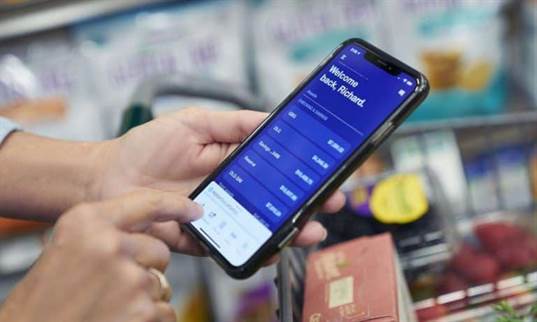How does building edge computing software differ from writing other cloud applications, what do you need to know to get started, and does Microsoft’s definition hold up in the first place? The ReadME Project Senior Editor Klint Finley gathered three experts to answer these and other questions. Edge figuring is a sensible solution for data-driven undertakings that require lightning-fast results and a raised level of flexibility, dependent upon the current status of things. This plan grew out of the way that most of the devices arranged near the edge came up short on computational power and limited capacity to separate and then again process the data they accumulated.

In traditional enterprise computing, data is produced at a client endpoint, such as a user’s computer. That data is moved across a WAN such as the internet, through the corporate LAN, where the data is stored and worked upon by an enterprise application. This remains a proven and time-tested approach to client-server computing for most typical business applications. Data is the lifeblood of modern business, providing valuable business insight and supporting real-time control over critical business processes and operations.
Industrial PC Designs – Fanless Cooling Technology
For example, rugged edge computers are often connected to high-speed cameras and infrared sensors that capture a video or photo of the product, analyzing it in real time to determine whether the product has any defects. If there are any defects, the product is flagged for further inspection or is removed from the assembly line. For example, some farmers use machine vision to inspect crops and find ripe crops that are ready to be harvested.

Edge devices typically process data locally and only send the most important data to the cloud, reducing bandwidth and latency. Edge computing is a distributed computing paradigm that brings computation and data storage closer to the sources of data. This is expected to improve response times and save bandwidth.[1] Edge computing is an architecture rather than a specific technology,[2] and a topology- and location-sensitive form of distributed computing.
Eliminates Latency
You’ll therefore need to develop comprehensive security strategies to safeguard your edge computing infrastructure from potential threats. Edge computing offers a number of benefits, but it also poses a number of challenges and considerations you’ll need to recognise if you want to embrace this technology. In this article, we’re delving deep into the meaning of edge computing, exploring what it is, how it works, and its potential impact on the future of infrastructure management.
- This could be one of the reasons behind its rapid popularity in the digital space.
- They also need data on vehicle condition, speed, location, road and traffic conditions, and nearby vehicles.
- The costs of implementing an edge infrastructure in an organization can be both complex and expensive.
- Edge architecture is a distributed computing architecture that encompasses all the components active in edge computing.
- Cloud providers also incorporate an assortment of pre-packaged services for IoT operations, making the cloud a preferred centralized platform for IoT deployments.
- Edge computing is transforming how data generated by billions of IoT and other devices is stored, processed, analyzed and transported.
In general, distributed computing models are hardly new, and the concepts of remote offices, branch offices, data center colocation and cloud computing have a long and proven track record. Now, modern IT architects have moved from the concept of centralized data centers and embraced the edge infrastructure. Here, the computing and storage resources are moved from a data center to the location where the user generates the data (or the data source). Rugged edge NVR computers enable the deployment of surveillance systems in harsh environments where regular computers cannot survive. Rugged NVR computers are used to gather, process, and analyze video footage, only sending footage that sets off certain triggers to the cloud for remote monitoring and analysis.
What is edge computing vs cloud computing?
Edge computing — and mobile edge computing on 5G networks — enables faster and more comprehensive data analysis, creating the opportunity for deeper insights, faster response times and improved customer experiences. This enables companies to deliver more satisfying end-user experiences, support latency-sensitive use cases and innovate faster with technologies such as AI and machine learning. At its most basic level, edge computing brings computation and data storage closer to the devices where it’s being gathered, rather than relying on a central location that can be thousands of miles away. This is done so that data, especially real-time data, does not suffer latency issues that can affect an application’s performance. In addition, companies can save money by having the processing done locally, reducing the amount of data that needs to be sent to a centralized or cloud-based location.
Banks may need edge to analyze ATM video feeds in real-time in order to increase consumer safety. Mining companies can use their data to optimize their operations, improve worker safety, reduce energy consumption and increase productivity. Retailers can personalize the shopping experiences for their customers and rapidly communicate specialized offers. Companies that leverage kiosk services can automate the remote distribution and management of their kiosk-based applications, helping to ensure they continue to operate even when they aren’t connected or have poor network connectivity.
Intelligent Transportation Systems
In traditional computing, where data was produced at the client-side (like a user’s PC), it moved across the internet to corporate LAN to store data and process it using an enterprise app. Next, the output is sent back, traveling through the internet, to reach the client’s device. As all the computation happens close or at the source of data, such as computers, webcams, etc., bandwidth is supplied for their usage only, reducing wastage.
An example includes a partnership between AWS and Verizon to bring better connectivity to the edge. Edge computing processes data that is time-sensitive, whereas cloud computing handles data that lacks time constraints. CIOs in banking, mining, retail, or just about any other industry, are building strategies designed to personalize customer experiences, generate faster insights and actions, and maintain continuous operations. This can be achieved by adopting a massively decentralized computing architecture, otherwise known as edge computing. Within each industry, however, are particular uses cases that drive the need for edge IT.
What is edge computing?
Fog computing typically takes a step back and puts compute and storage resources “within” the data, but not necessarily “at” the data. Edge computing is used in various applications, such as IoT devices, autonomous vehicles, industrial automation, and even in ensuring worker safety at construction sites. It’s all about processing data closer to where it’s needed for quicker and more efficient decision-making. Edge computing helps you unlock the potential of the vast untapped data that’s created by connected devices.

This course will provide a very comprehensive guide on this new way of computing. Whether you are exploring to implement Edge Computing in your organization or want to up your knowledge on this new phenomenon, this is the right course for you. With its rapid uptake amongst various industries and domains, Edge Computing is making inroads into our daily lives too. With the exponential Who is a UX Engineer growth of IoT devices, Edge Computing is completely changing the way technology is being consumed. ClearBlade released their Edge Native Intelligent Asset Application that allows an edge maintainer to build alert devices and connect to IoT devices without coding. For instance, the Far Edge infrastructure for a mobile service agency can be near the base stations of cellphone towers.
Privacy and security concerns
1 To take it a step further, about 90% of all data acquired by businesses today will never be used. 2 Edge computing uses high-performance processing, low-latency connection, and secure platforms to reap the benefits of data received from devices. Hence, deploying edge computing at those systems or near them offers greater connectivity and continuous monitoring capabilities.
Are You Living on the Edge?
Smart speakers, watches and phones all use edge computing to collect and process data while touching the physical world. IoT devices, point of sales (POS) systems, robots, vehicles and sensors can all also be edge devices if they compute locally and talk to the cloud. But the number of devices connected to the internet, and the volume of data being produced by those devices and used by businesses, is growing far too quickly for traditional data center infrastructures to accommodate. Gartner predicted that by 2025, 75% of enterprise-generated data will be created outside of centralized data centers. The prospect of moving so much data in situations that can often be time- or disruption-sensitive puts incredible strain on the global internet, which itself is often subject to congestion and disruption. In simplest terms, edge computing moves some portion of storage and compute resources out of the central data center and closer to the source of the data itself.
Most users have developed a craving for both smaller and more powerful devices. Because cloud computing involves networks of computers, it’s always going to be more powerful than any device that most people could reasonably own. Other edge computing applications are for video conferencing that consumes large bandwidths, efficient caching with code running on CDN edge networks, financial services such as banks for security, and more. On one end of the spectrum, a business might want to handle much of the process on their end.
